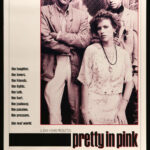In Jami Attenberg’s insightful 2013 novel, “The Middlesteins,” a chapter unfolds from the collective viewpoint of parents’ friends at a bar and bat mitzvah. These indistinguishable figures, Cohns, Grodsteins, Weinmans, and Frankens, narrate their experience in the first-person plural, painting a picture of middle age invisibility.
“We were at the age where we had almost been forgotten but were not quite old enough to be heralded for still being alive after all these years,” they lament. “Of course we were seated together at the reception, the eight of us.”
Reading “The Middlesteins” years ago, nearing the age of those parents, I found their portrayal of aging’s fading act profoundly depressing. It only intensified as the reception narrative continued, depicting couples limiting themselves to a single, quick dance before their minds wandered to mundane tasks and missed grandchildren:
[w]e checked our watches, and thought about the errands we needed to run the next day, the walk we would take in the sunshine, the phone calls we would make to our children, some of whom lived in other states, with grandchildren we missed terribly. We had only been there for two hours, but it was already starting to feel late.
Post-reading, I wish I could claim a vow to never become “those people.” Or promised to be the kind of guest hosts appreciate. Yet, for about a decade, I embodied that very apathy. Weddings and b’nai mitzvah felt like obligations. I’d complain about the music volume, linger in hallways, and calculate the earliest polite exit time.
However, the tide began to turn in the last couple of years. As friends’ children started getting married, a resistance to fading into the background of the “parents’ friends table” ignited within me. At the subsequent wedding, instead of enduring “Mr. Brightside” from the sidelines, I pulled my wife onto the dance floor and stayed there. My dance repertoire is limited to perhaps three moves, but I deployed them relentlessly. A new vow formed that night: to remain on those two left feet until the band concluded. And I’ve upheld it.
This transformation could be attributed to the pandemic’s perspective shift. Emerging from lockdown, I, like many others, embraced “letting life out of the box,” echoing Tony Hoagland’s poetic sentiment.
Jewish guilt, even law, also played a role. The Talmud, in Brachot 6b, considers rejoicing with the bride and groom — simchat chatan v’kallah – a mitzvah, a commandment, not merely a kind gesture. This resonated deeply, pushing me further onto the dance floor.
And the wisdom of 2,000 years of rabbinic thought anticipated the self-consciousness of awkward, middle-aged dancers. Worried about looking foolish? Consider Rabbi Shmuel son of Rabbi Isaac, who would juggle myrtle twigs before the bride (Ketubot 17a). When Rabbi Zeira questioned such behavior, Shmuel’s actions, though not involving seltzer bottles as the text playfully suggests, were ultimately seen as elevating, not demeaning, him or Torah. His death was even marked by divine fire, a rare and powerful sendoff.
Jewish history itself serves as inspiration. In her seminal work, “The Jewish Wedding,” Anita Diamant quotes Holocaust survivors: “To dance at a Jewish wedding is to dance on Hitler’s grave.” She elaborates, “For every generation, weddings are a glimpse into the future, a repudiation of past griefs, and a celebration of the here and now.” This historical weight adds profound meaning to the simple act of dancing.
Over these recent years, I’ve uncovered a surprising truth. Despite feeling clumsy and awkward circling with strangers, people find it admirable. Brides and grooms, among others, have approached us after weddings, commending us for “closing down the dance floor.” It seems that the energy of enthusiastic participation is infectious and appreciated.
This isn’t to disrespect anyone who can’t or prefers not to dance, or to those who advocate for just shaking it off, or those who simply want to celebrate good times in their own way. Hosts genuinely don’t mind guests who sit out a dance or two. But consider this: last Sunday, celebrating my middle child’s wedding to a remarkable woman, the music was loud, the dance floor surged with energy, and I was exactly where I was meant to be. My heart swelled, embracing everyone present, dancers and observers alike.
Because when it comes to celebrating young love in an uncertain world, I’ve become a staunch advocate for joining the dance floor. So, perhaps it’s time to embrace the spirit of “shut up and dance with me,” and find joy in collective celebration.


